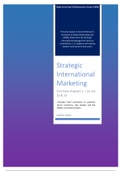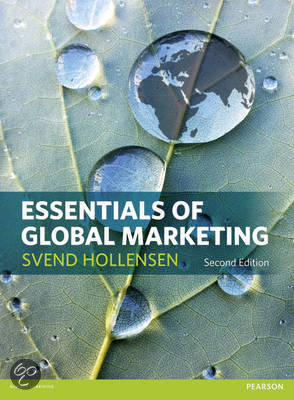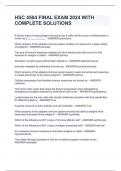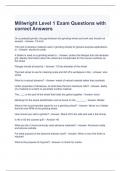Samenvatting
Summary Strategic International Marketing - Q3 2019
- Instelling
- Saxion Hogeschool (Saxion)
Include Chapter 1- 14, exc. 10 & 13. No information left out, which makes it an extensive document, but without all the 'fluff' from the original book. Primarily based on Svend Hollensen’s Essentials of Global Marketing book (2008), slides from the Strategic International Management lectures prov...
[Meer zien]







